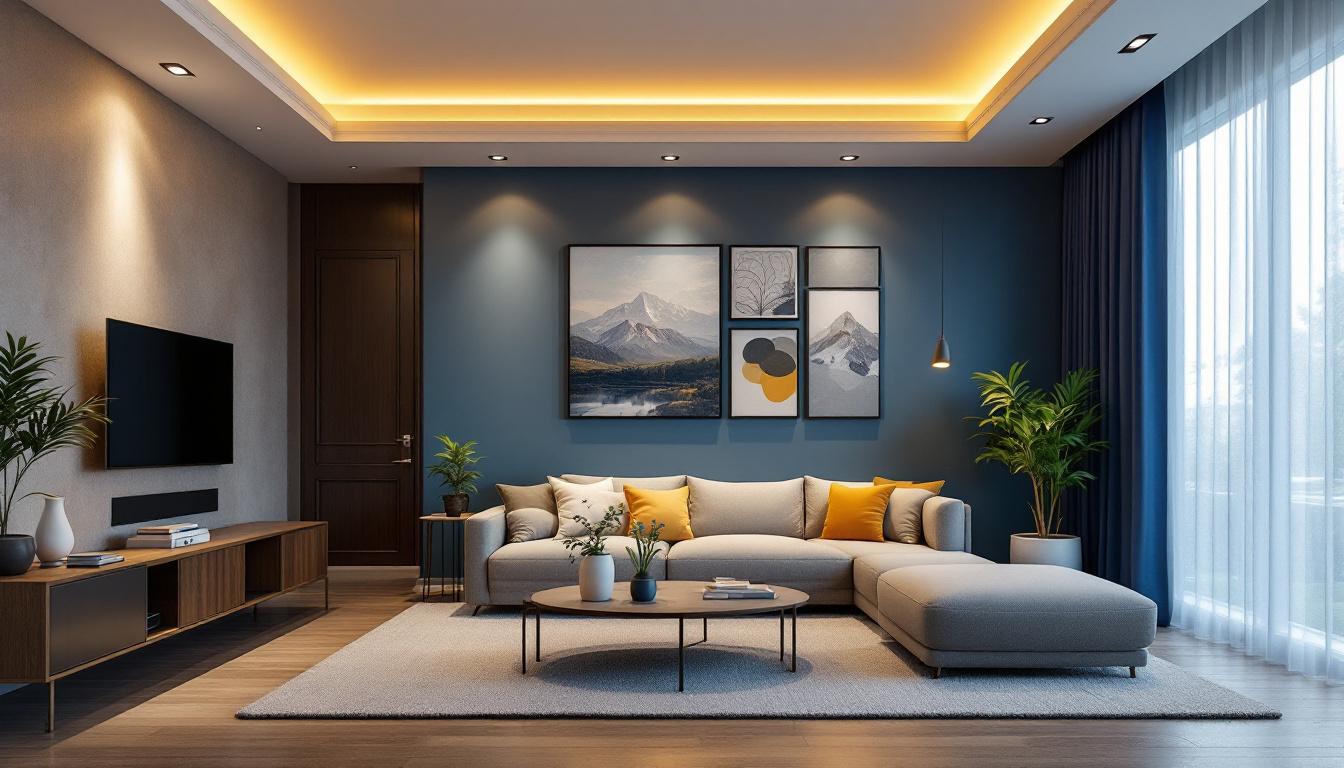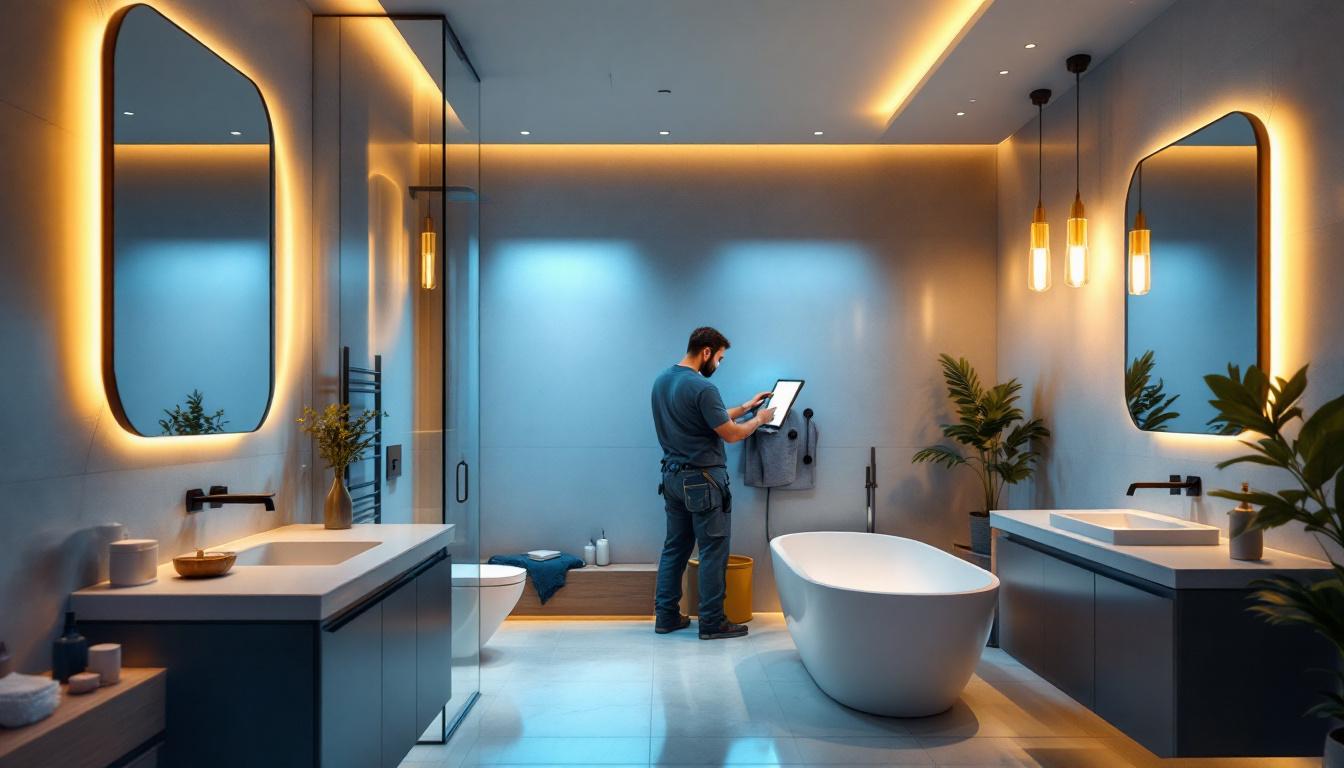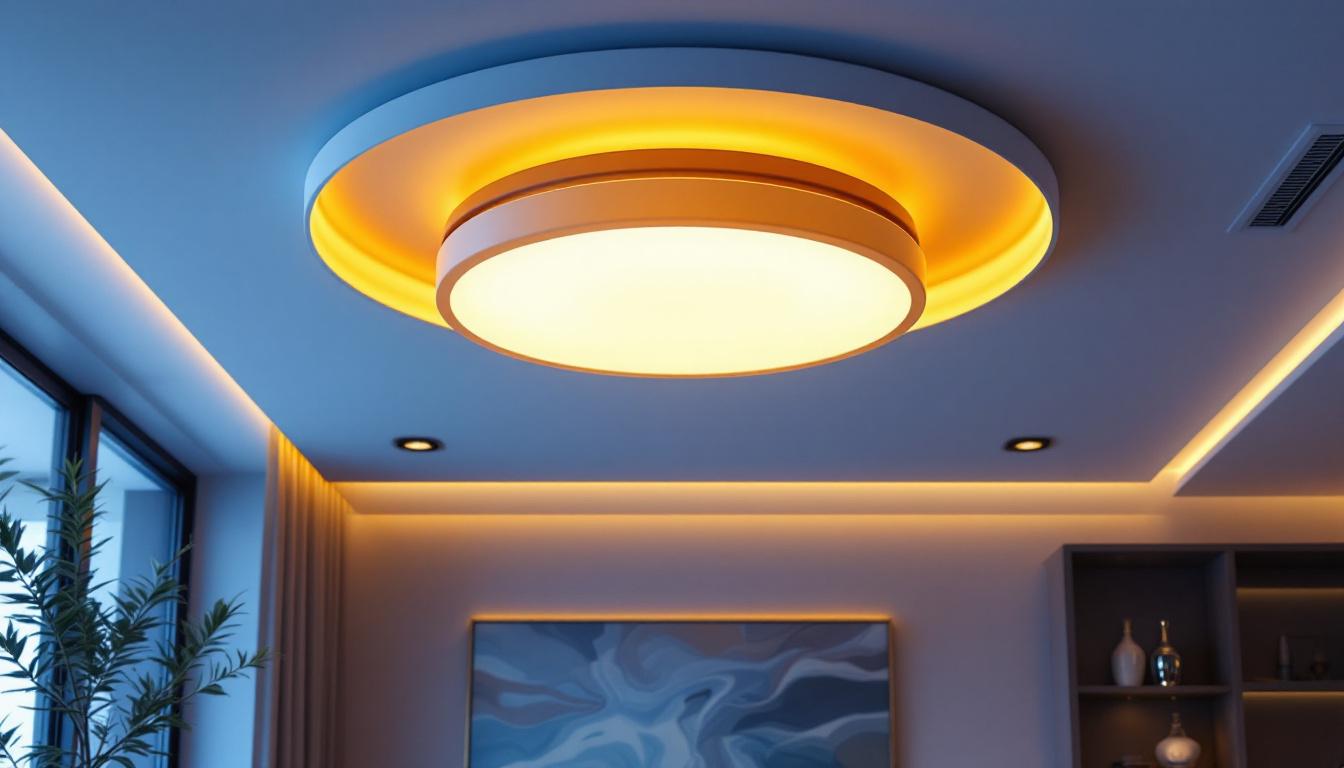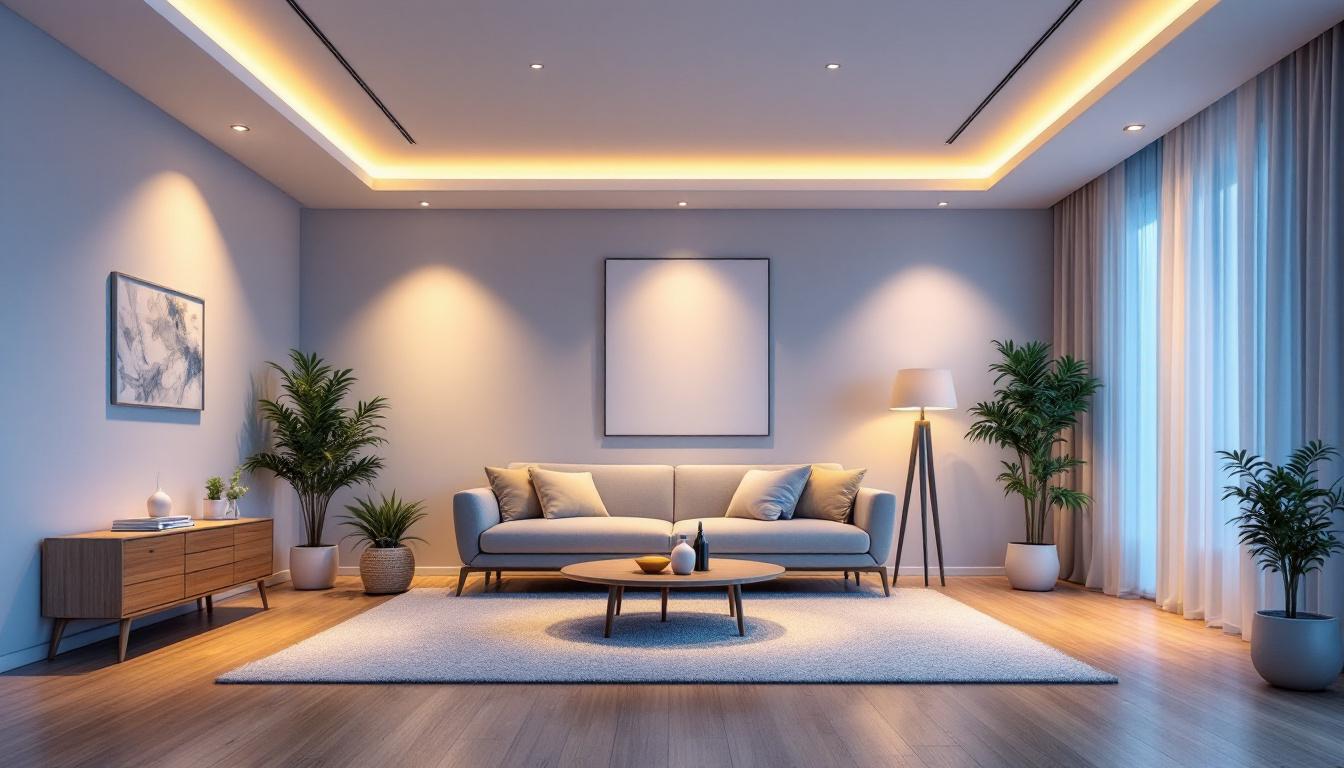
Recessed lighting has become a staple in modern interior design, offering a sleek and unobtrusive way to illuminate spaces. Among the various sizes available, the 4-inch trim has gained popularity for its versatility and efficiency. For lighting contractors, understanding the best practices for installing and utilizing 4-inch recessed lighting trim is essential for ensuring client satisfaction and achieving optimal results. This article delves into the intricacies of 4-inch recessed lighting, providing valuable insights and best practices tailored specifically for lighting professionals.
Before diving into installation techniques and best practices, it is crucial to understand what 4-inch recessed lighting entails. This size is often chosen for its ability to provide focused lighting while maintaining a low profile. Ideal for both residential and commercial applications, 4-inch trims can be used for general, task, or accent lighting.
One of the primary advantages of 4-inch recessed lighting is its compact size, which allows for installation in tight spaces where larger fixtures might be impractical. This makes it an excellent choice for areas like hallways, kitchens, and bathrooms. Additionally, the smaller trim can create a more modern aesthetic, blending seamlessly into ceilings and walls.
Moreover, 4-inch trims often come equipped with energy-efficient LED options, which not only reduce energy consumption but also provide longer lifespans compared to traditional incandescent bulbs. This efficiency is a selling point for clients looking to minimize their environmental footprint while enhancing their lighting design. The ability to dim these LED fixtures also adds to their appeal, allowing users to adjust the ambiance according to their needs, whether for a cozy family gathering or a bright, productive workspace.
4-inch recessed lighting can be utilized in a variety of settings, each benefiting from its unique characteristics. In residential spaces, these fixtures can illuminate living rooms, dining areas, and bedrooms, creating a warm and inviting atmosphere. In commercial settings, they can enhance retail displays or provide ambient lighting in office environments.
Furthermore, the versatility of 4-inch trims allows for creative applications, such as highlighting artwork or architectural features. Contractors can leverage this adaptability to meet specific client needs and preferences, showcasing their expertise in lighting design. For instance, in a gallery setting, strategically placed recessed lights can draw attention to sculptures or paintings, enhancing the viewer’s experience and appreciation of the art. Similarly, in a home, these lights can be used to accentuate textured walls or unique ceiling designs, adding depth and character to the overall aesthetic.
In addition to their aesthetic benefits, 4-inch recessed lights can also contribute to improved functionality in spaces where visibility is key. For example, in kitchens, these fixtures can be installed above countertops to provide direct task lighting, making food preparation safer and more efficient. In bathrooms, they can illuminate mirrors and shower areas, ensuring that every corner is well-lit for grooming and hygiene. This thoughtful application of recessed lighting not only enhances the usability of a space but also elevates the overall design, marrying form and function seamlessly.
Successful installation of 4-inch recessed lighting requires meticulous planning and execution. Following best practices not only ensures safety and compliance but also enhances the overall effectiveness of the lighting.
Before installation begins, it is essential to plan the layout of the recessed lighting. This involves determining the number of fixtures needed, their placement, and the type of lighting required for each area. A well-thought-out layout can prevent issues such as uneven lighting or excessive shadows.
When planning, consider the height of the ceiling and the purpose of the room. For instance, in a kitchen, task lighting should be concentrated over work areas, while living spaces may benefit from a more dispersed lighting approach. Utilizing lighting design software can aid in visualizing the layout and making necessary adjustments before installation.
Selecting the appropriate fixtures is crucial for achieving the desired lighting effect. When choosing 4-inch recessed trims, consider factors such as beam angle, color temperature, and dimming capabilities. A narrow beam angle can create focused light for tasks, while a wider angle may be suitable for ambient lighting.
Additionally, color temperature plays a significant role in the ambiance of a space. Warmer tones (2700K-3000K) are often preferred for residential settings, while cooler tones (3500K-4000K) may be more appropriate for commercial applications. Ensuring that the chosen fixtures are compatible with dimmers can also enhance the versatility of the lighting design.
Safety is paramount during the installation of recessed lighting. Contractors must adhere to local building codes and regulations, ensuring that all electrical work is performed to standard. This includes using appropriate wiring and ensuring that fixtures are installed securely to prevent hazards.
Additionally, it is essential to consider the insulation around the fixtures. Using IC-rated (Insulation Contact) trims allows for safe installation in insulated ceilings, reducing the risk of fire hazards. Proper ventilation should also be considered to prevent overheating of the fixtures, which can lead to premature failure.
Beyond installation, enhancing the quality of light produced by 4-inch recessed trims can significantly elevate the overall lighting design. This involves understanding how to manipulate light to achieve the desired effect in any given space.
Layering light is a fundamental principle in lighting design that involves combining different types of lighting—ambient, task, and accent—to create a balanced and functional environment. For instance, in a living room, ambient light can be provided by recessed fixtures, while table lamps or wall sconces can serve as task lighting for reading.
Incorporating dimmers into the lighting scheme can also enhance the layering effect, allowing clients to adjust the intensity of light based on their activities or mood. This flexibility is particularly valuable in multipurpose spaces where different lighting scenarios may be required at various times.
Reflective surfaces can significantly enhance the effectiveness of recessed lighting. By strategically placing mirrors, glass, or glossy finishes in a room, light can be bounced around, creating a brighter and more open atmosphere. Contractors should consider the placement of these surfaces during the planning phase to maximize the impact of the recessed fixtures.
Additionally, using light-colored walls and ceilings can help to reflect more light, further enhancing the overall brightness of the space. This is especially beneficial in smaller rooms where natural light may be limited.
Regular inspections of recessed lighting fixtures can help identify potential issues before they become significant problems. Contractors should recommend that clients check for flickering lights, unusual sounds, or discoloration of the trim, which may indicate electrical issues or bulb failure.
Additionally, cleaning the fixtures periodically can help maintain their brightness and appearance. Dust and debris can accumulate over time, diminishing the quality of light produced. A simple wipe-down with a damp cloth can often restore the fixture’s original luster.
Contractors should be prepared to troubleshoot common issues that may arise with recessed lighting. Flickering lights can often be attributed to loose connections or faulty dimmers. Ensuring that all connections are secure and that compatible dimmers are used can resolve these issues.
If a fixture fails to turn on, checking the circuit breaker and replacing the bulb are the first steps. If problems persist, further investigation into the wiring may be necessary. Being knowledgeable about these troubleshooting techniques can enhance a contractor’s reputation for reliability and expertise.
Educating clients about their recessed lighting systems is a crucial aspect of the contractor-client relationship. By providing clear communication and guidance, contractors can empower clients to make informed decisions and maintain their lighting effectively.
During the initial consultation, contractors should take the time to discuss various options with clients, including fixture styles, color temperatures, and control systems. Understanding the client’s preferences and lifestyle will help tailor the lighting design to their specific needs.
Providing visual aids, such as samples or design software renderings, can help clients visualize the final outcome and make more informed decisions. This collaborative approach fosters trust and ensures that the final design aligns with the client’s vision.
After installation, contractors should offer clients clear maintenance guidelines to ensure the longevity of their recessed lighting. This includes information on bulb replacement, cleaning techniques, and troubleshooting common issues. Providing a written guide can serve as a valuable reference for clients in the future.
Additionally, contractors may consider offering follow-up services or check-ins to address any concerns that may arise post-installation. This proactive approach can enhance client satisfaction and lead to referrals and repeat business.
4-inch recessed lighting trim offers a versatile and efficient solution for modern lighting design. By understanding the nuances of installation, enhancing lighting quality, and maintaining open communication with clients, lighting contractors can elevate their services and deliver exceptional results. Implementing these best practices not only enhances the aesthetic appeal of spaces but also ensures that clients enjoy the full benefits of their lighting systems for years to come.
As the demand for innovative lighting solutions continues to grow, staying informed about the latest trends and technologies in recessed lighting will position contractors as industry leaders. Embracing these best practices will not only enhance the quality of installations but also foster lasting relationships with clients, ultimately leading to a successful and rewarding career in the lighting industry.
Ready to take your lighting projects to the next level with the 4-inch recessed lighting trim? At LumenWholesale, we provide lighting contractors like you with the highest quality, spec-grade lighting products at unbeatable wholesale prices. Say goodbye to local distributor markups and hello to superior lighting solutions that meet the highest industry standards. With our hassle-free bulk buying and free shipping, you can stock up on premium lighting without hidden fees or compromises. Elevate your lighting installations with the perfect blend of quality, affordability, and convenience. Wholesale Lighting at the Best Value is just a click away!

Discover the best bathroom recessed lighting options and learn how lighting contractors can boost efficiency, safety, and aesthetics—unlock expert tips today!.

Discover the essential guide for lighting contractors on selecting the perfect dimmer switches for LED lights.

Discover how offering unique flush mount ceiling lights can elevate your lighting contracting business.

Discover expert tips and techniques for lighting contractors to master the art of installing recessed can lights.